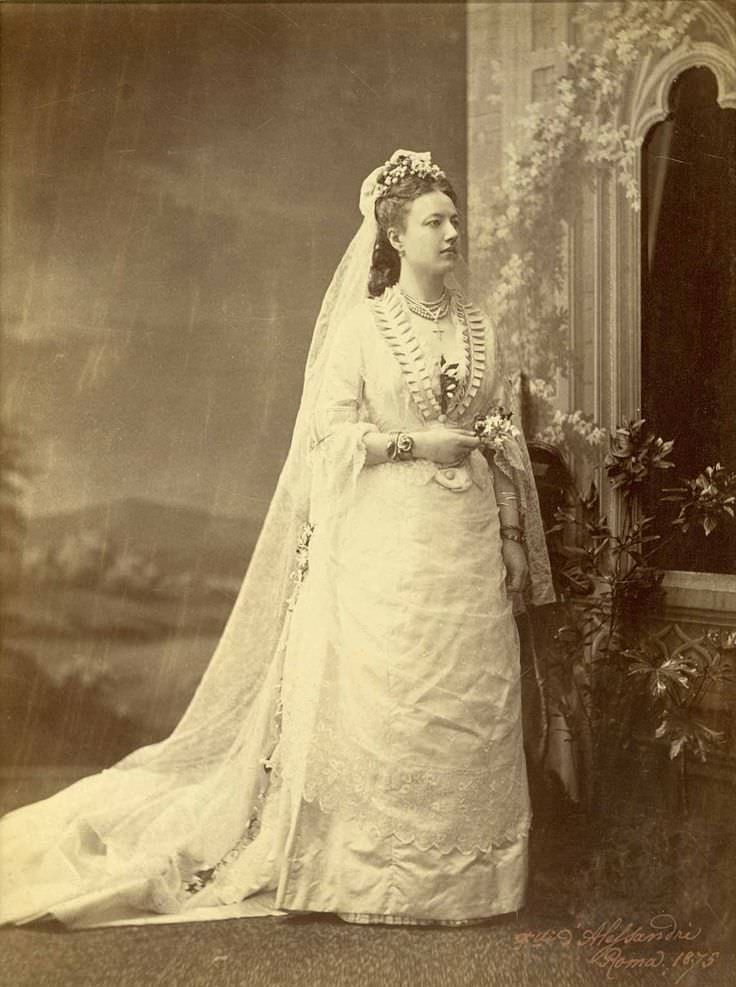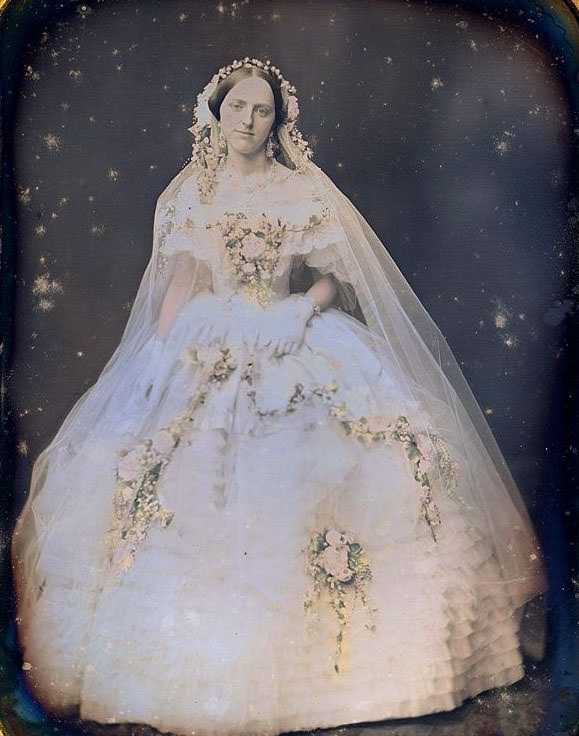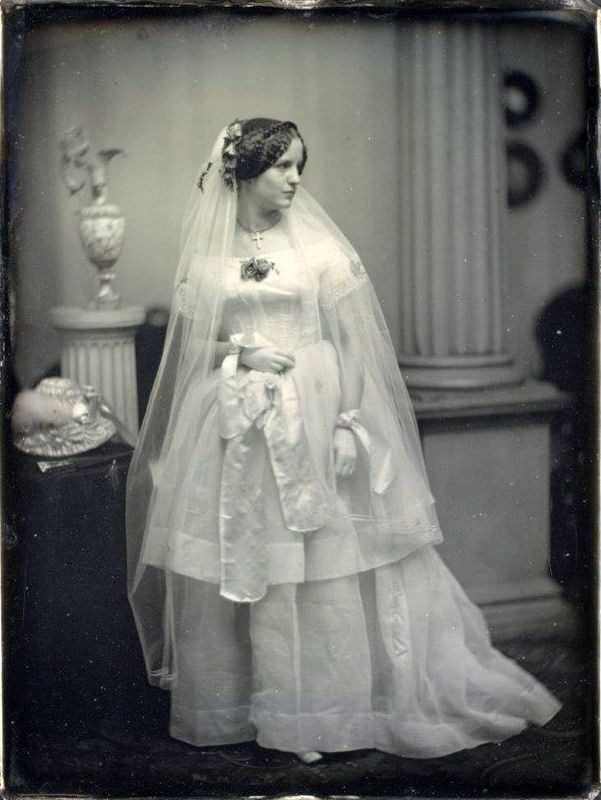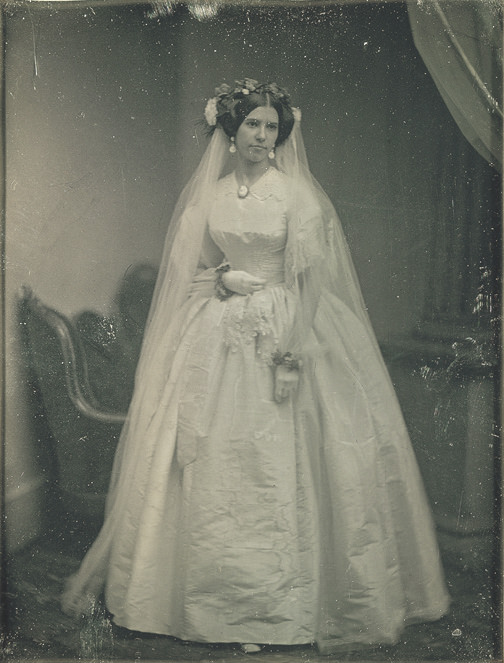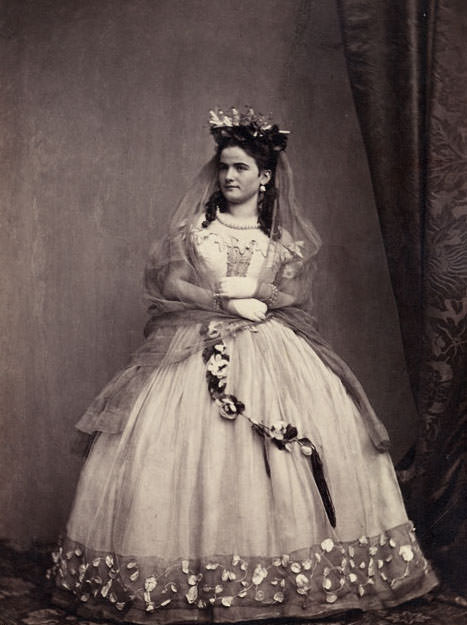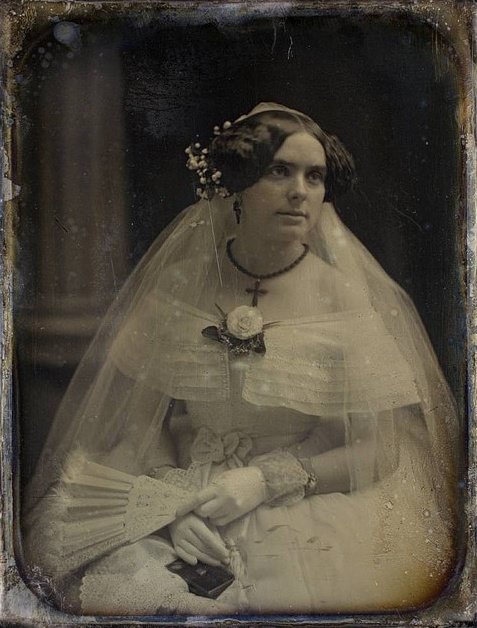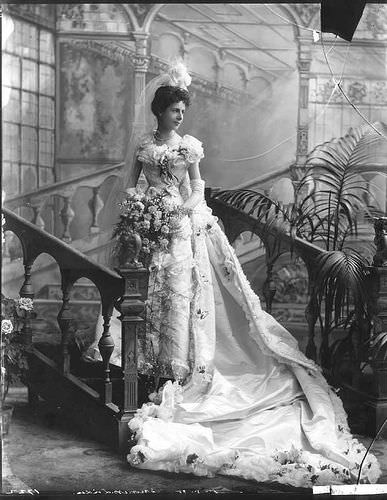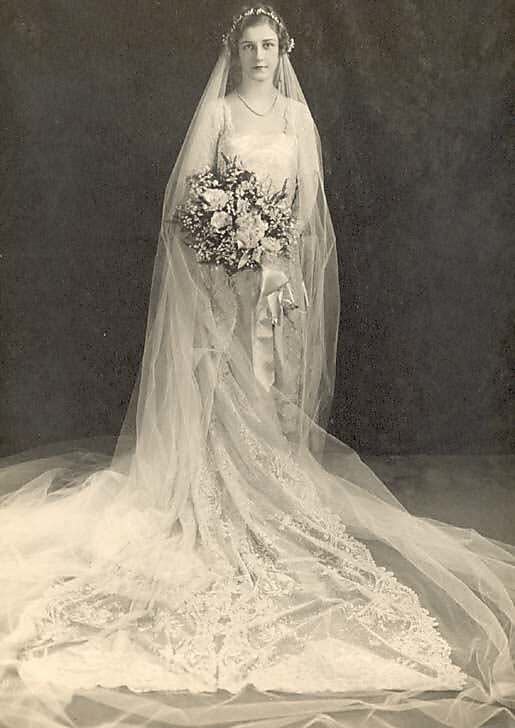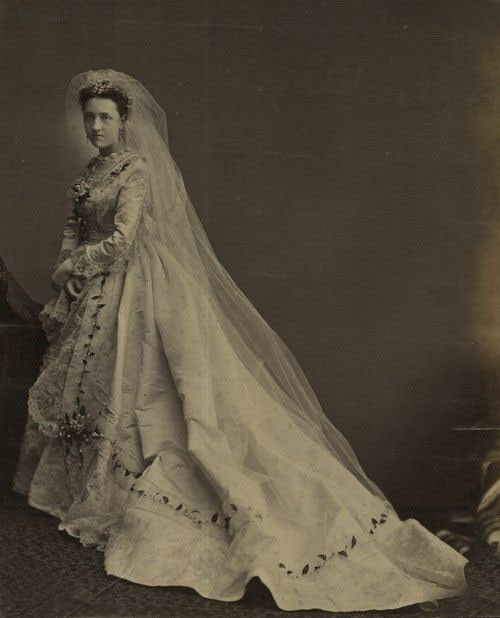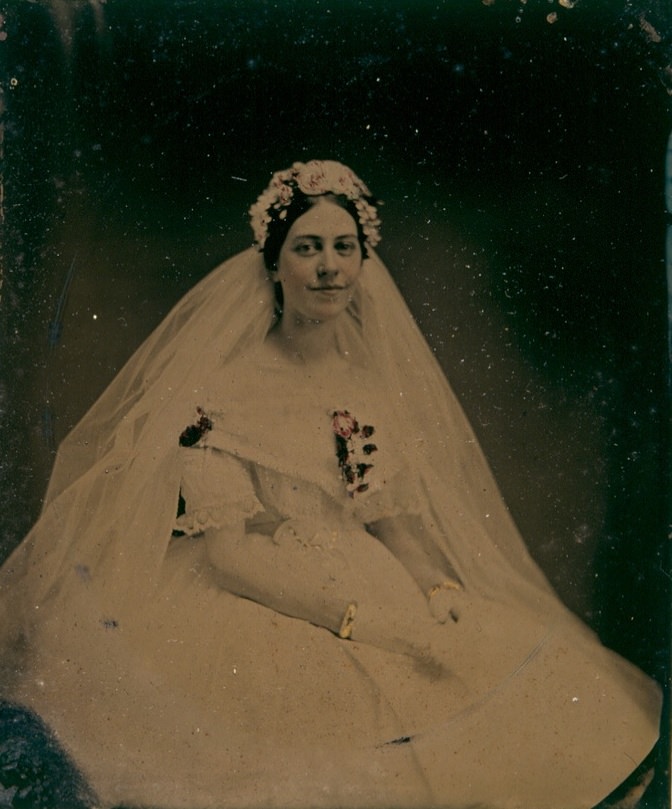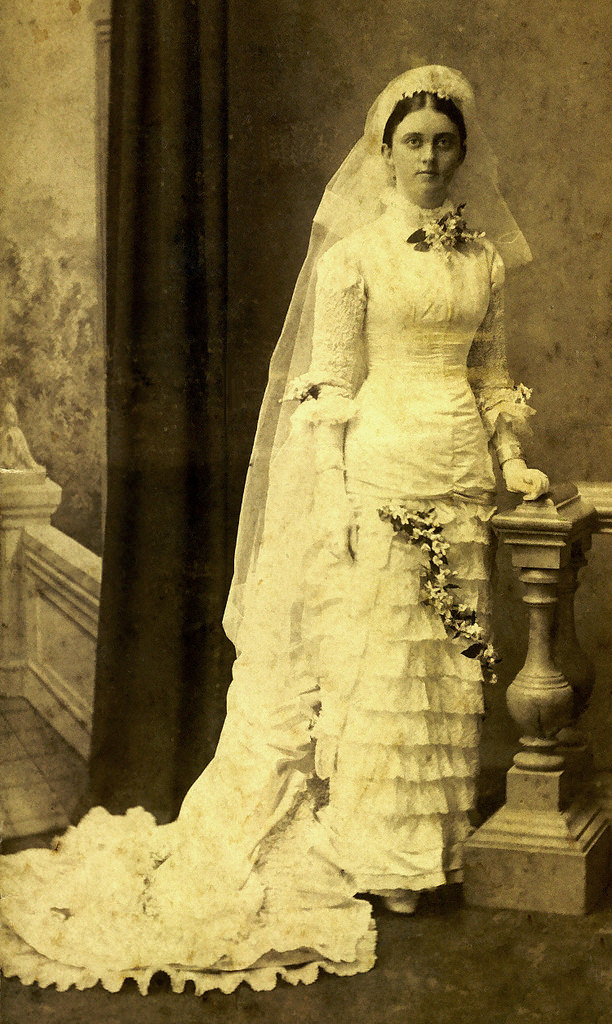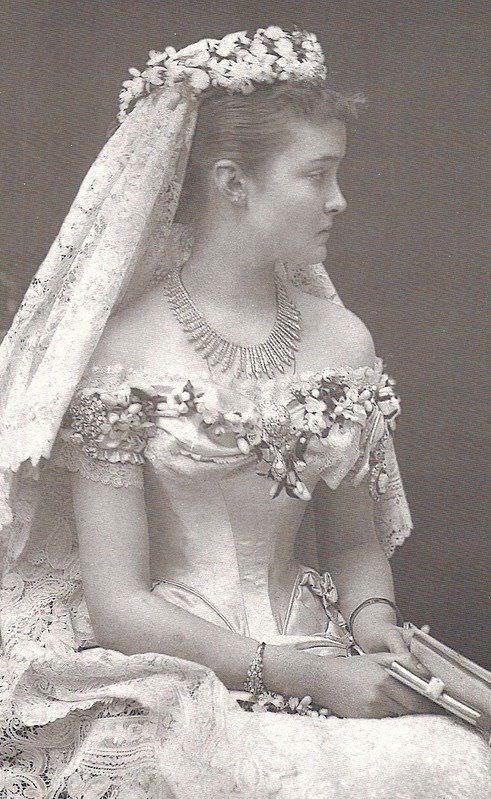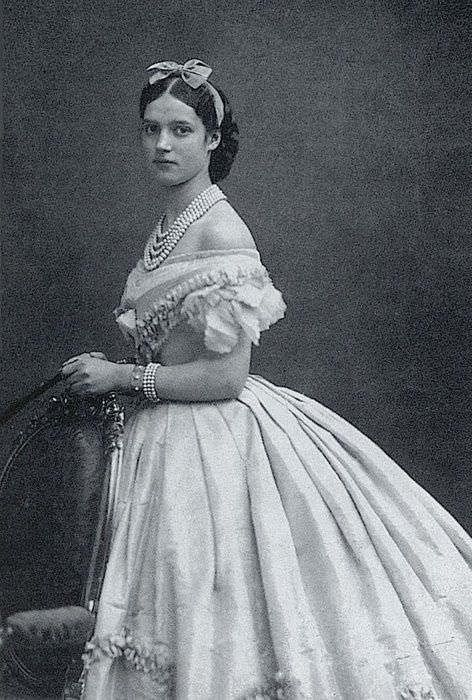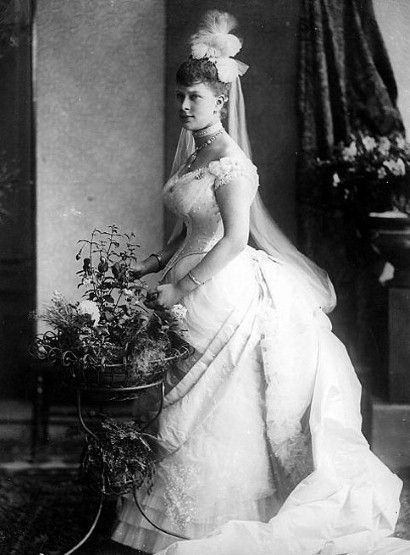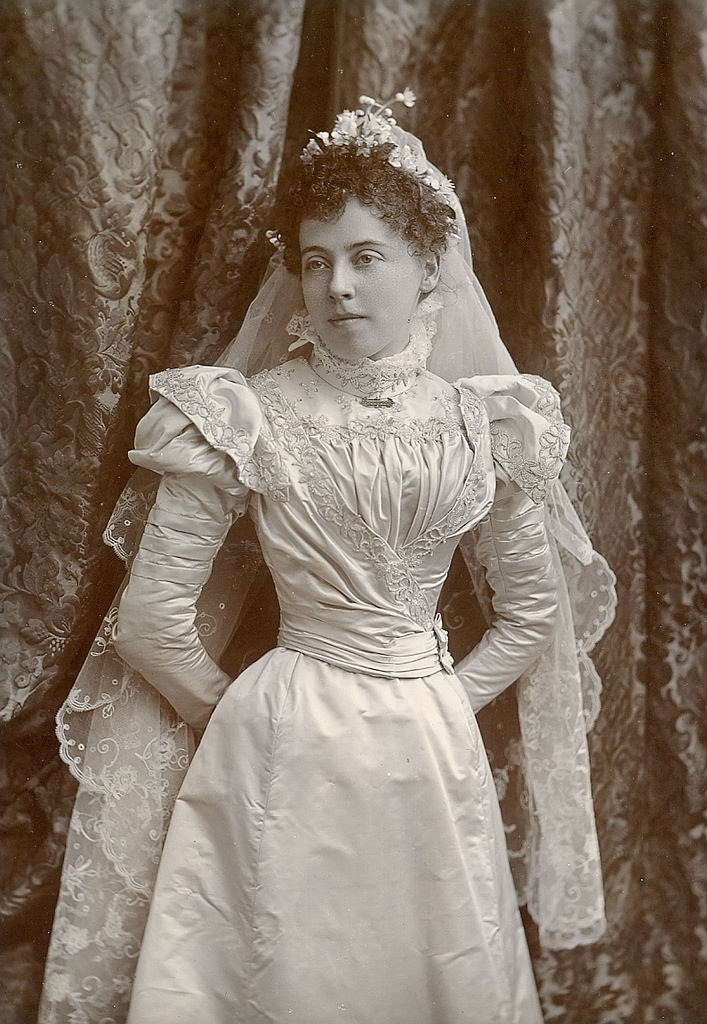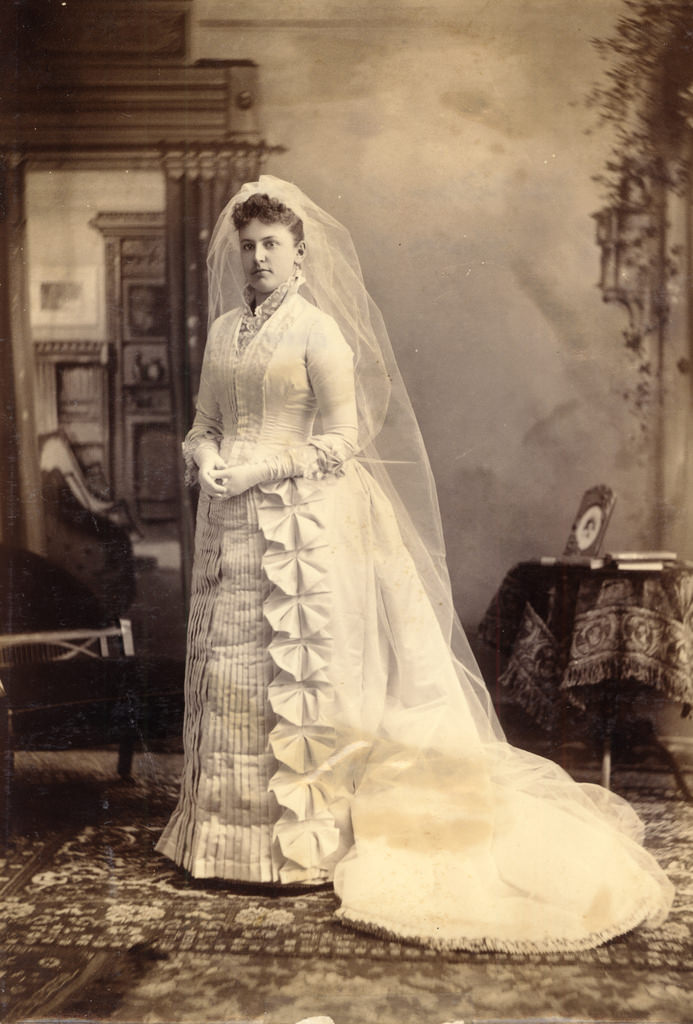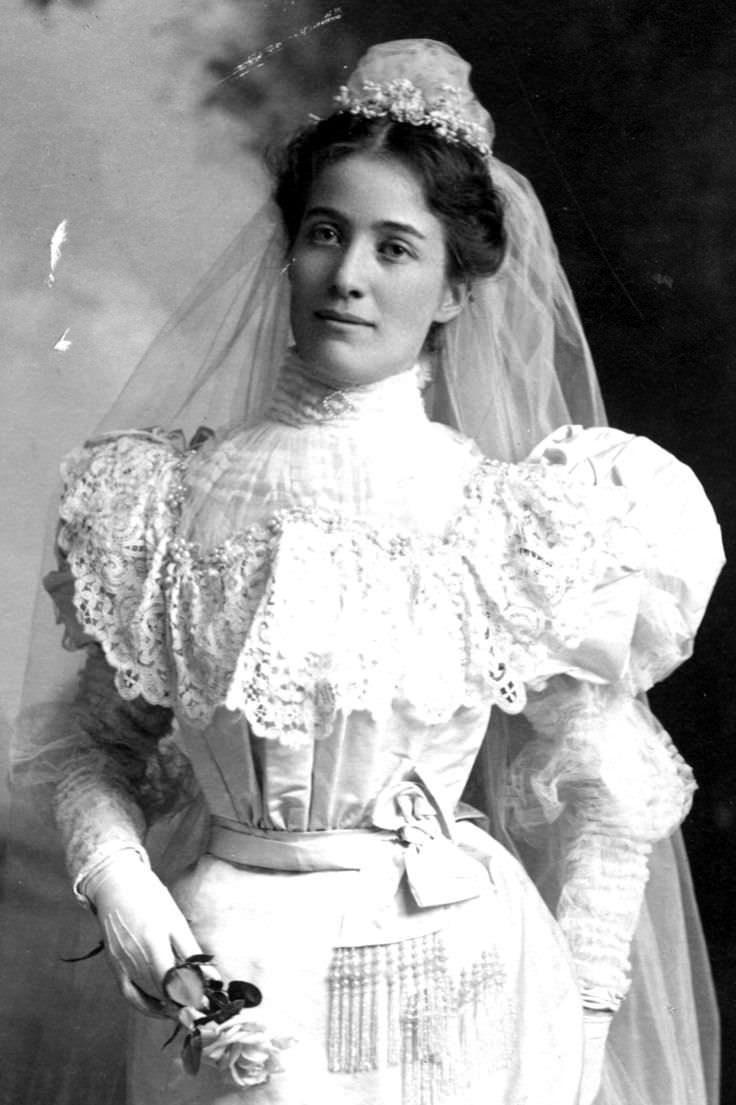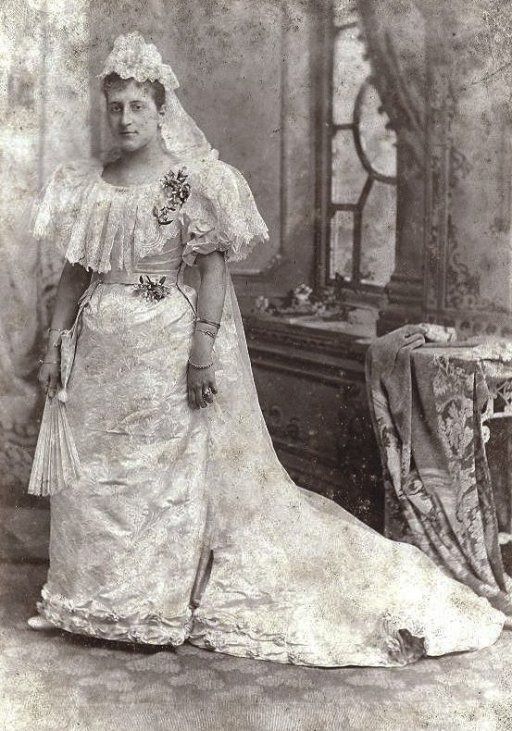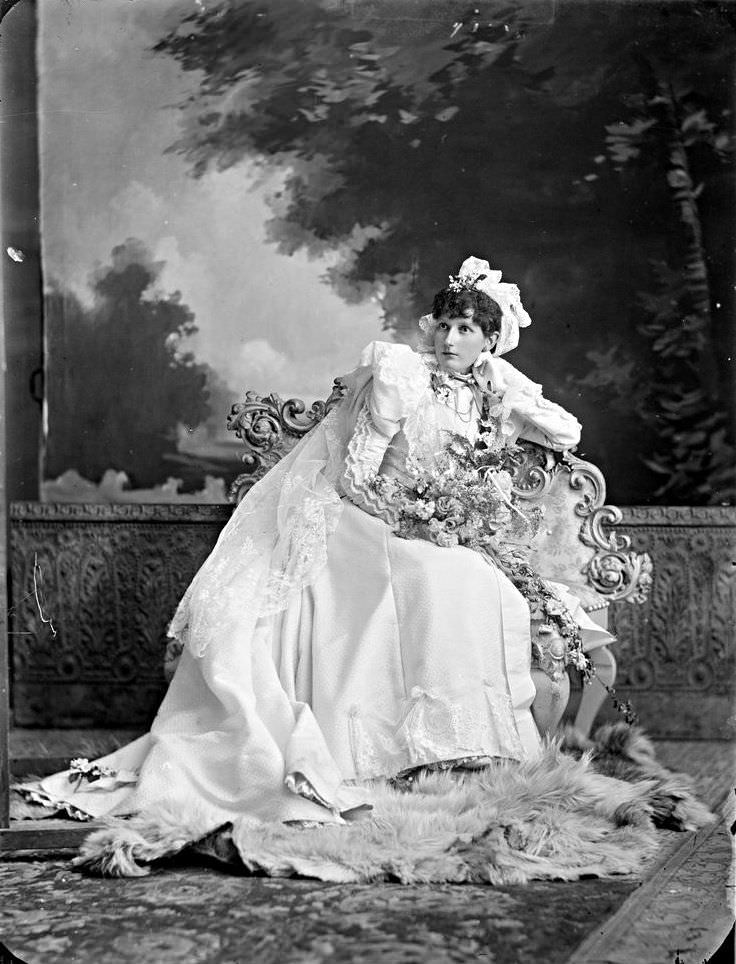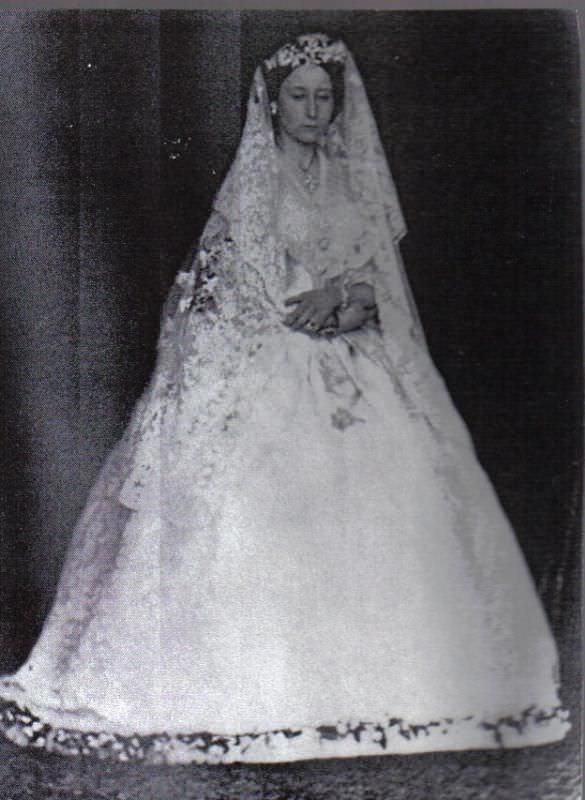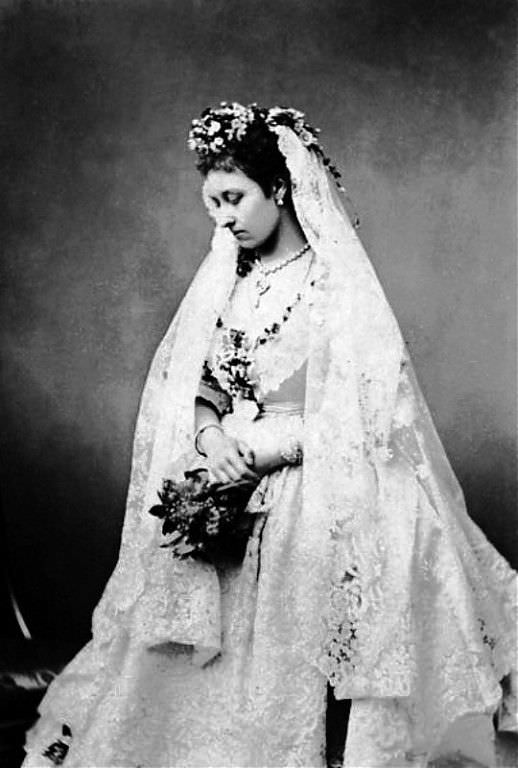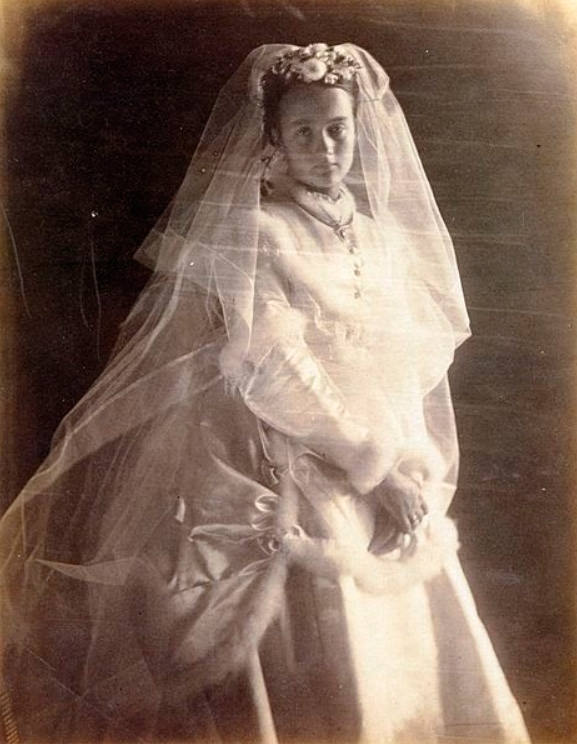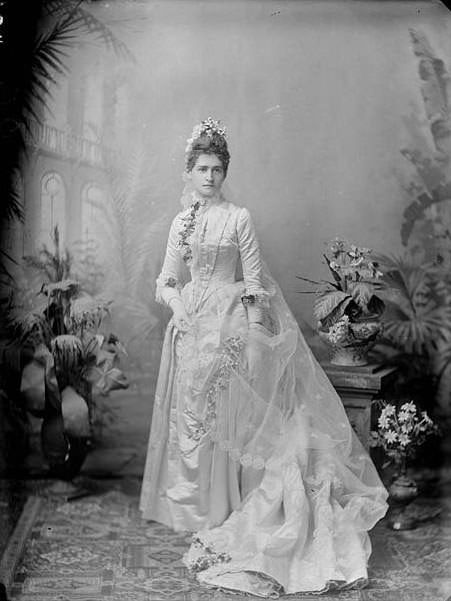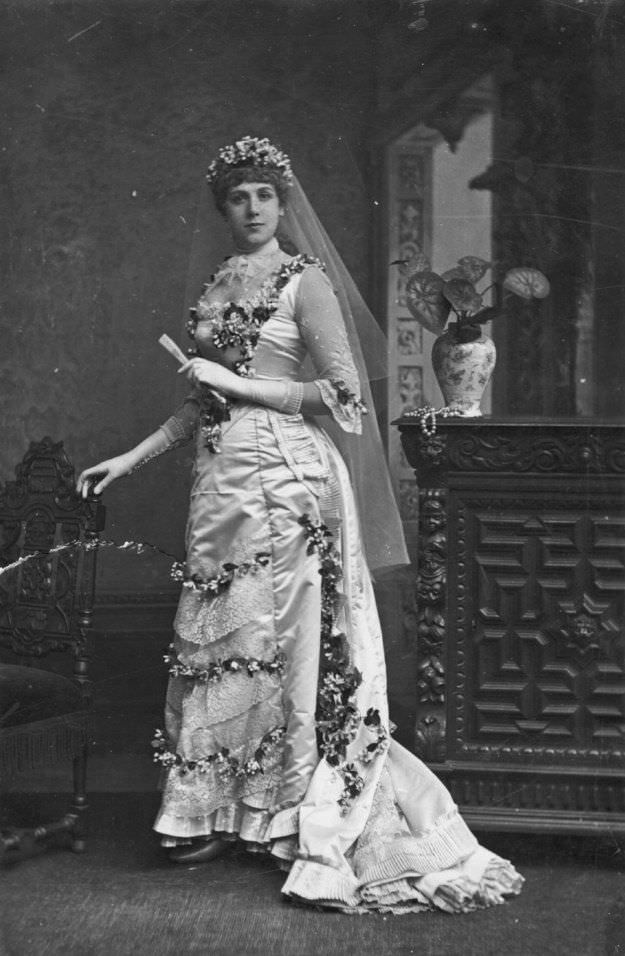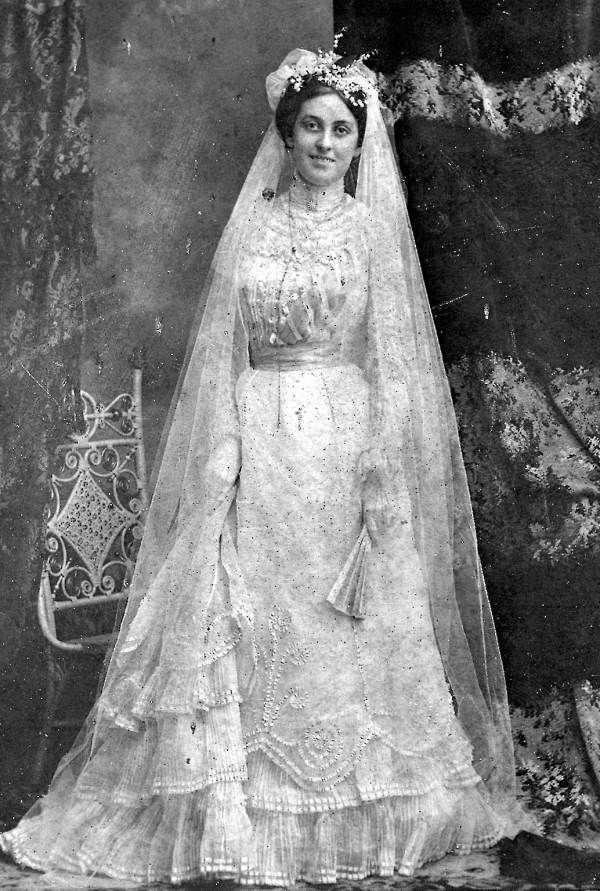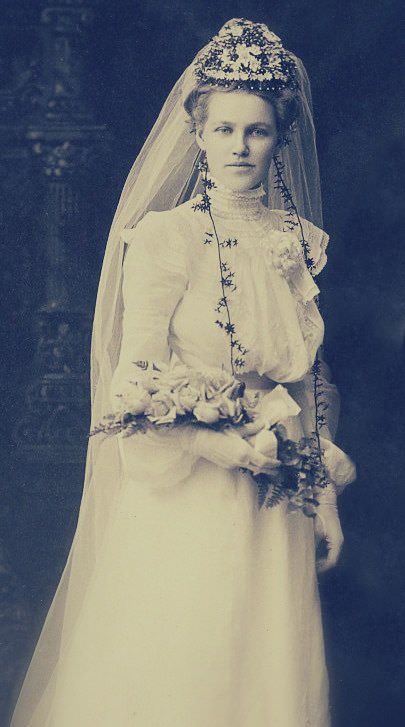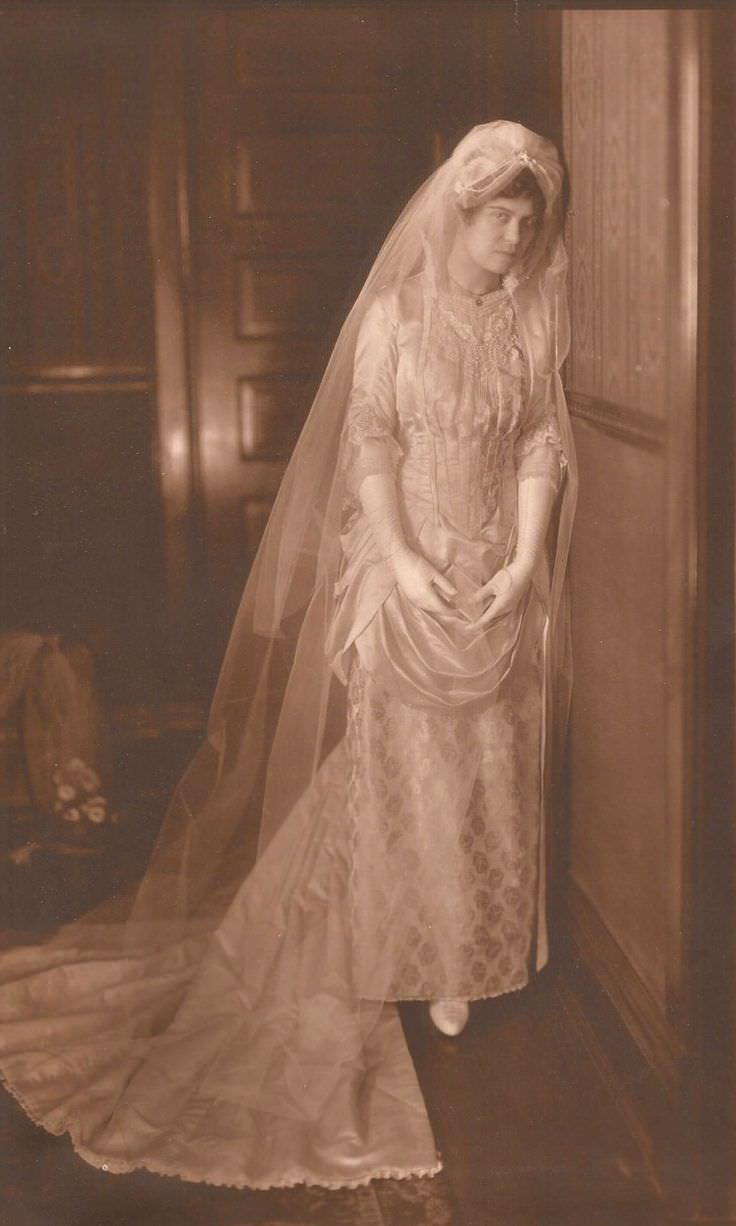The traditional color of wedding gowns and bouquets has remained white since Queen Victoria wed in 1840. Afterwards, the woman usually used a different bodice for Court Presentations.
In early Victorian wedding dresses, the bodice, waist, and skirt were fitted. The petticoats and hoops were optional. The dress was made of organdy, tulle, lace, gauze, silk, linen, or cashmere. The veil was made of gauze, sheer cotton, or lace. During this period, the bridesmaids’ dresses and veils were all white. Traditionally, veil-wearing brides wore coronets of flowers, usually orange blossoms for the bride and roses or other in-season flowers for the attendants.
The mid-Victorian bride (1870s) enjoyed an emergence of middle-class wealth and a display of their new wealth. Parisian wedding gowns fashioned by Worth were the ultimate status symbols. If one could not afford an original, one copied. There were now full-court trains, long veils, a bustle, elegant details, and two bodices–a modest one for the wedding and a low one for special occasions. In the late Victorian era (the 1890s), the bustle was replaced by a demi-train and oversized sleeves. In churches, the bride’s dress must have a train, as well as a veil of the same length. The veil could be made of silk tulle or lace. Until the 1890s, the veil covered the bride’s face and was not removed until after church. However, the veil was no longer used as a shawl after the wedding. The white kid gloves were long enough to tuck under the sleeves and had a slit in one finger so the ring could be slipped on without removing the gloves. These slippers were made of white kid, satin, or brocade, and the heels were one inch.
Remarried widows in the early to mid-Victorian eras avoided white dresses, bridesmaids, veils, and orange blossoms (a sign of purity.) They tended to wear pearl or lavender satin gowns trimmed with ostrich feathers. She was allowed attendants and pages in the later decades, but not a veil of orange blossoms. If she wore a color other than white, she would prefer rose, salmon, ivory, or violet.


